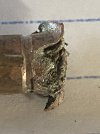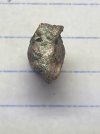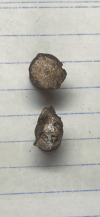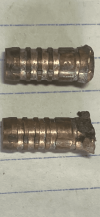Gday franko21
No worries on spending time . also I love animals so much that they deserve the best & if you only get one thing out of the following im so happy as your impact to tipping will improve & im trying not to sound cocky so please don't take it that way I'm no guru & fairly dumb just observant & of course Jm2cw
Couple great questions in here & im probably going to go all over the place as coming to the end of calving season & my sleep pattern has messed my body up ( my mind is buggered already lol ) so just pull me up where clarifications are needed or correct me if I'm wrong or put a different proposition up as I'm always open to learning
this process is not as simple as just a few lines I believe , well my world as I've spent the best part of my hunting life trying to work things out for the most consistent outcome & just lucky culling was a means to see patterns so easily
First on caliber if you can run a bigger caliber @ the same velocity as accurate I'll go bigger every time now there is also the part you can drop velocity on the bigger caliber & results are roughly equal ( there is a line cross moment & I haven't been able to work that out with certainty but trying )
& how monos have changed my old process of what I did to get great preformance out of cup& core ( still some similarities but we need to clear our head especially with hammers )
It's all in the bubble
Penertration is my number 1 priority
( assuming pill is accurate ) as shallow penertration is worse than over ( broadly speaking ) so I want ample penertration & really I can drop around 25% ( hammers ) from my old thoughts / uses with ease on the majority of weights example
375 300gr now 250
30 cal 200gr now 150
Now depending on critter I'll go up or down off terminal results but my base is set on 25% & hammers cover this with ease other brands a little different & the 15% less is a good baseline if you are a longrange only guy I'd look @ a different process
The rest I just do up drop charts of a comparison between the 2 & velocity impact is key here & leads us into the more crucial part & that's the velocity impact & creating the correct bubble part of this is a big enough wound channel & more importantly straight line penertration & this is where we have to be extremely careful!!! I can't emphasise this enough with monos ( leaving hammers out )
The vast majority of companies give a low end working velocity well let's define working & is it a pill that just starts to deform or takes on a different shape than their normal most effective / efficient terminal shape hmmm I've got to get pictures to show what I mean but time limited so I'll come back asap with those or a few other forms of the deformed pill @ low velocities I just don't like as the fur calculator has shown preformance drops off considerably
so let's put the cat among the pigeons
Most mono companies low end working velocities are crap yes they will kill but the results are less than impressive & I would take certain frangibles anyday / everyday over the vast majority of them
I am one for the best terminal results over our hunting ranges we can get not that just killed pill ( I'm also realist as a 3000 impact kills better than a 2000 broadly speaking & don't expect the 2 different impacts to kill identical as they don't some frangible are actually better killers @ lower velocity than high along with some monos it's simple really = velocity windows )
The one where this low end velocity shows up is extended runs on the fur calculator or worse a lost animal & just by looking @ a pill in its terminal form ( across velocities) I have a fair certainty of where it will potentially fail then it's confirmed either way once critters are taken this also includes high velocity impact
I think the biggest thing people get confused is when we see that great preformance on the good shot placement ( myself included until I step back & clear my head ) when really it doesn't matter on that as most pills kill if in the right spot it's that less than ideal shot that tells us more & look how many comment great preformance on a cns shot myself included . you can get data from it but I dismiss it ( with respect once again I'm talking terminally & love the outcome for hunter & animal ) as a reliable indicator as a true solid will do the same basically & on my sheets I have a spot for cns then bangflop ( plus other columns) as 2 different things in my world
Hope that explains a little more but the biggest thing is look @ a company that it's terminal pill design mushroom or shed dosent matter when that changes you have a idea preformance will be compromised eventually eg
Barnes 30 cal 125 gr pill works very well @ most ranges drop the velocity impacts either side of 2200 & 3300 & the form has changed enough that longer runs occur on average especially the lower velocity
The higher velocity impact kills better than the low but the 33003400 once it starts ripping petals off becomes basically a round nose & while it is straight for a bit it dosent stay that way & on occasions it will miss the vitals completely on quarter away or even deflect off bone more often than it's true form
This is not to say it happens ever shot but I'll guarantee it will eventually as I've seen way to many times , a low % yes but I don't like a bingo raffle
This is replicated so many times with so many pills it becomes so repetitive once you see what's going on
Yes hammers are different & I haven't worked out the full velocity window of these yet but it's big & the top end

Gotta go back asap
Cheers





